Multan (مُلتان; [mʊltaːn] ) is a city in Punjab, Pakistan, located on the bank of Chenab River. Multan is one of the five largest urban centres of Pakistan in 2024 and is the major cultural, religious and economic centre of Southern Punjab. Multan is known for its rich ancient heritage and historic landmarks. The city is one of the oldest inhabited cities of Asia, with a history stretching deep into antiquity. A historic capital of Punjab and a significant cultural centre of Indus Valley civilization. Multan region was centre of many civilizations in its 5 millennia old history.
Multan was part of the Achaemenid Empire ruled by Darius the Great of Iran around 500 BC era. The city was besieged by Alexander the Great during the Mallian Campaign. It was conquered by the Umayyad military com...Read more
Multan (مُلتان; [mʊltaːn] ) is a city in Punjab, Pakistan, located on the bank of Chenab River. Multan is one of the five largest urban centres of Pakistan in 2024 and is the major cultural, religious and economic centre of Southern Punjab. Multan is known for its rich ancient heritage and historic landmarks. The city is one of the oldest inhabited cities of Asia, with a history stretching deep into antiquity. A historic capital of Punjab and a significant cultural centre of Indus Valley civilization. Multan region was centre of many civilizations in its 5 millennia old history.
Multan was part of the Achaemenid Empire ruled by Darius the Great of Iran around 500 BC era. The city was besieged by Alexander the Great during the Mallian Campaign. It was conquered by the Umayyad military commander Muhammad bin Qasim in 712 CE after the conquest of Sindh. Multan reached height of its splendour during the Arab rule of 9th and 10th century when it was made a separate state, the Emirate of Multan, thereby ruling large parts of Punjab and Kashmir.
Later, the region came under the rule of empires such as the Ghaznavids, the Ghaurids and the Mamluks. In 1445, it became capital of the Langah Sultanate. Multan province was one of the largest provinces of the Mughal Empire. Afterwards, Multan became part of the Durrani and Sikh empires successively. In 1848, it was conquered by the British Empire and became part of British Punjab.
Multan was among the largest cities of the world in early medieval era. The city was among most important trading centres and a great centre of knowledge and learning in the medieval Islamic Indian subcontinent, and attracted a multitude of Sufi mystics in the 11th and 12th centuries, becoming a great centre of spirituality in entire South Asia and earning the city the sobriquet "City of Saints." The city, along with the nearby city of Uch, is renowned for its large number of Sufi shrines dating from that era.
Multan was founded by the great grandson of Prophet Noah according to the Persian historian Firishta.[1] Founded before 3000 BC, Multan was home to ancient Aryan civilization of ethnic Iranian descent. The region has been the site of much warfare because of its location on a major invasion route between South and Central Asia.[2] The region is home to numerous archaeological sites dating to the era of the Early Harappan period of the Indus Valley civilization from 3000 BCE until 2800 BCE.[3]
According to Hindu religious texts, Multan was founded by the Hindu sage Kashyapa.[4] These texts also assert that Multan was the capital of the Trigarta Kingdom ruled by the Katoch dynasty during the Kurukshetra War that is central to the Hindu epic poem, the Mahabharata.[5][6][7]
Famous Hindu festival of Holi is generally assumed to have originated from Multan.[8] The city was visited by Greek Admiral Skylax, who passed through the area in 515 BCE on behest of Iran's Darius the great. The city is also mentioned to be explored by the Greek historian Herodotus in 400 BC.[9] Kaspatyrus or Kashyapura (an old name of Multan) was a Gandharan city when conquered by Darius's army of Achaemenid empire, and it was included in the Province of Arachosia in 500 BCE era.[10]
Greek InvasionMultan is believed to have been the Malli capital that was conquered by Alexander the Great in 326 BCE as part of the Mallian Campaign. The Malli tribe, together with nearby tribes, gathered an army of 90,000 personnel to fight against an army of 50,000 Greeks. This was the largest army faced by Greeks in the entire subcontinent.[11] During the siege of the city's citadel, Alexander reputedly leaped into the inner area of the citadel, where he faced the Mallians leader.[12] Alexander was wounded by an arrow that had penetrated his lung, leaving him severely injured.[13] After a fierce battle at the site of 'Khooni Burj' the Mallian army eventually surrendered, preventing further bloodshed.[14] During Alexander's era, Multan was located on an island in the Ravi river, which has since shifted course numerous times throughout the centuries.[4]
In the mid-5th century CE, the city was attacked by White Huns, a group of Barbarian Hephthalite nomads led by Toramana. After a fierce fight they conquered Multan, but did not stay long.[15]
By the mid 7th century CE, Multan was conquered by Chach of Alor, of the Hindu Rai dynasty.[16] Chach appointed a thakur to govern from Multan, and used his army to settle boundary disputes with Kashmir.[17]
Islamic conquestVisit by an Arab General
Multan was first visited by the Muslim army after the reign of the Khalifa Ali bin abi Talib, in 44 Hijri (664 A.D.), when Mohalib, the Arab General, afterwards an eminent commander in Persia and Arabia, who had fought in the service of Rashidun caliphs, penetrated to the ancient capital of the Malli. He returned with many prisoners of war. The expedition, however, seems to have been directed towards exploration of the country as no attempt was apparently made to retain the conquest.[18]
Umayyads Arab Conquest
After his conquest of Sindh, Muhammad ibn Qasim in 712 CE captured Multan from the local ruler Raja Dahir following a two-month siege.[19] Muhammad ibn Qasim's army was running out of supplies, but Multan's defenses were still holding strong. His army was considering a retreat when an unnamed Multani came to him and told him about an underground canal from which they derived their sustenance. He told them that if Muhammad's army were to block that canal, Multan would be under their control. Muhammad ibn Qasim blocked the canal and soon took control of Multan. Following ibn Qasim's conquest, the city's Subjects remained mostly non-Muslim for the next few decades under the Umayyad Caliphate.[20]
Umayyads after conquering key cities of Uch and Multan inhabited thousands of Arabs in Multan. These Arabs ruled the vast areas of Punjab for the next 3 centuries. From their capital in Multan they ruled the far areas of Kashmir. Spreading Islam in subcontinent. Multan was the last conquest of Muhammad bin Qasim after which he returned back to Arabia where on the way he was martyred.
Emirate of Multan (9th and 10th century) Abbasid EmirateBy the mid-800s, the Banu Munabbih (855–959) also known as the Banu Sama, who claimed descent from the Prophet Muhammad's Quraysh tribe came to rule Multan, and established the Emirate of Banu Munabbih, which ruled for the next century.[21]
During this time, the city's Arabic nickname was Faraj Bayt al-Dhahab, "Frontier House of Gold".
The 10th century Arab historian Al-Masudi noted Multan as the city where Central Asian caravans from Islamic Khorasan would assemble.[22] The 10th century Persian geographer Estakhri noted that the city of Multan was approximately half the size of Sindh's capital Mansura, but had more population and regional area, which along with Multan were the only two Arab principalities in South Asia. Arabic was spoken in both cities,[20] though the inhabitants of Multan were reported by Estakhri to also have been speakers of Persian,[22] reflecting the importance of trade with Khorasan. Polyglossia rendered Multani merchants culturally well-suited for trade with the Islamic world.[22]
The 10th century Hudud al-'Alam notes that Multan's rulers were also in control of Lahore,[22] though that city was then lost to the Hindu Shahi.[22] During the 10th century, Multan's rulers resided at a camp outside of the city named Jandrawār, and would enter Multan once a week on the back of an elephant for Friday prayers.[23]
Ismaili EmirateMultan became capital of Emirate of Multan in 855. Al Masudi of Baghdad who visited Indus valley in 915 A.D mentioned in his book "Meadows of Gold" that it is one of the strongest frontier places of Muslims and in its neighbourhood there are a hundred and twenty thousand towns and villages".[24]
By the mid 10th century, Multan had come under the influence of the Qarmatian Ismailis. The Qarmatians had been expelled from Egypt and Iraq following their defeat at the hands of the Abbasids there. Qarmatians zealots had famously sacked Mecca,[25] and outraged the Muslim world with their theft and ransom of the Kaaba's Black Stone, and desecration of the Zamzam Well with corpses during the Hajj season of 930 CE.[26]
The governor of Jhang, Umar bin Hafas, was a clandestine supporter of the Fatimid movement and the Batiniya influence spread in Southern Punjab. Then, the Qarmatians who had established contacts with the Fatimids in Egypt set up an independent dynasty in Multan and ruled the surrounding areas.[27]
They wrested control of the city from the pro-Abbasid Amirate of Banu Munabbih,[28] and established the Emirate of Multan, while pledging allegiance to the Ismaili Fatimid Dynasty based in Cairo.[29][22] During this period, Uch and Multan remained a central pilgrimage site for Vaishnavite and Surya devotees, and their admixture with Isma’īlīsm created the Satpanth tradition. Hence, the beginning of the eleventh century witnessed a sacral and political diversity in Uch that was both unique and precarious.[30] The Qarmatian Ismailis opposed Hindu pilgrims worshipping the sun,[31] and destroyed the Sun Temple and smashed its revered Aditya idol in the late 10th century.[28] The Qarmatians built an Ismaili congregational mosque above the ruins to replace the city's Sunni congregational mosque that had been established by the city's early rulers.[20]
11th-16th century CE Multan is famous for its large number of Sufi shrines, including the unique rectangular tomb of Shah Gardez that dates from the 1150s and is covered in blue enameled tiles typical of Multan.
Multan is famous for its large number of Sufi shrines, including the unique rectangular tomb of Shah Gardez that dates from the 1150s and is covered in blue enameled tiles typical of Multan. The shrine of Shamsuddin Sabzwari dates from 1330, and has a unique green dome.
The shrine of Shamsuddin Sabzwari dates from 1330, and has a unique green dome. The Mausoleum of Shah Ali Akbar dating from the 1580s was built in the regional style that is typical of Multan's shrines.
The Mausoleum of Shah Ali Akbar dating from the 1580s was built in the regional style that is typical of Multan's shrines.
Mahmud of Ghazni in 1005 led an expedition against Multan's Qarmatian ruler Abul Fateh Daud. The city was surrendered, and Fateh Daud was permitted to retain control over the city with the condition that he adhere to Sunnism.[32] In 1007, Mahmud led another expedition to Multan against his former minister and Hindu convert, Niwasa Khan, who had renounced Islam and attempted to establish control of the region in collusion with Abul Fateh Daud of Multan.[32]
In 1010, Mahmud led his third and punitive expedition against Daud to depose and imprison him. [33][32][34] He restored the city's old Sunni congregational mosque, built by Muhammad bin Qasim.[20]
The 11th century scholar Abu Mansur al-Baghdadi reported that the Ismaili community was still living in the city.[33] Mahmud's rule over the region was noted by Al-Biruni to have ruined the region's former prosperity.[22] Following the Ghaznavid invasion of Multan, the local Ismaili community split, with one faction aligning themselves with the Druze religion,[33] which today survives in Lebanon, Syria, and the Golan Heights. Following Mahmud's death in 1030, Multan regained its independence from the Ghaznavid empire and came under the sway of Ismaili rule once again.[32] Shah Gardez, who came to Multan in 1088, is said to have contributed in the restoration of the city.
By the early 1100s, Multan was described by the Arab geographer Muhammad al-Idrisi as being a "large city" commanded by a citadel that was surrounded by a moat.[35] In the early 12th century, Multani poet Abdul Rahman penned the Sandesh Rasak,[20] the only known Muslim work in the medieval Apabhraṃśa language.[36]
Ghaurid dynastyIn 1175, Muhammad Ghori conquered Ismaili-ruled Multan,[23][37] after having invaded the region via the Gomal Pass from Afghanistan into Punjab, and used the city as a springboard for his unsuccessful campaign into Gujarat in 1178.[32] Multan was then annexed to the Ghurid Sultanate, and became an administrative province of the Mamluk Dynasty[21] — the first dynasty based in Delhi. Multan's Ismaili community rose up in an unsuccessful rebellion against the Ghaurids later in 1175.[33]
Mamluk dynastyFollowing the death of the first Mumluk Sultan, Qutb al-Din Aibak in 1210, Multan came under the rule of Nasiruddin Qabacha, who in 1222, successfully repulsed an attempted invasion by Sultan Jalal ad-Din Mingburnu of the Khwarazmian Empire,[21] whose origins were rooted in Konye-Urgench in modern-day Turkmenistan.[21] Uch and Sindh were also in control of Qabacha.[11]
Qabacha also captured Lahore many times and ruled all these regions. He repulsed a 40-day siege imposed on Multan city by Mongol forces who attempted to conquer the city.[38] He gathered a large army from Uch, Multan and Bukkhar (Sukkur) and Mongols were repulsed.[11]
Following Qabacha's death that same year, the Turkic king Iltutmish, the third Sultan of the Mamluk dynasty, captured and then annexed Multan in an expedition.[21][32] The Punjabi poet Baba Farid was born in the village of Khatwal near Multan in the 1200s.[37]
Qarlughids attempted to invade Multan in 1236,[39] while the Mongols tried to capture the city in 1241 after capturing Lahore - though they were repulsed.[32] The Mongols under Sali Noyan then successfully held the city to ransom in 1245–6,[39] before being recaptured by Sultan Ghiyas ud din Balban, the ninth Mamluk Sultan. Multan then fell to the Qarlughids in 1249, but was captured by Sher Khan that same year.[39] Multan was then conquered by Izz al-Din Balban Kashlu Khan in 1254, before he rebelled against Sultan Ghiyas ud din Balban in 1257 and fled to Iraq where he joined Mongol forces and captured Multan again, and dismantled its city walls.[39] The Mongols again attempted an invasion in 1279, but were dealt a decisive defeat.[37]
Khaljis invasionEmperor Alauddin Khalji of Delhi dispatched his brother Ulugh Khan in 1296 to conquer Multan region which was governed by surviving family members of his predecessor. (Sultan Jalal-ud-din Khalji)
After usurping the throne of Delhi, Alauddin decided to conquer key region of Multan which was governed by Arkali Khan and the surviving family members of Jalaluddin were present there. In November 1296, he sent a 30,000-40,000 strong army led by Ulugh Khan and Zafar Khan to Multan who successfully invaded the city after two months of siege.[40]
Amir Khusrau, the famous Indo-Persian Sufi singer, musician, poet and scholar visited Multan on the invitation of Khan Muhammad. Multan at the time was the gateway to India and was a center of knowledge and learning. Caravans of scholars, tradesmen and emissaries transited through Multan from Baghdad, Arabia and Persia on their way to Delhi. Khusrau wrote that:
I tied the belt of service on my waist and put on the cap of companionship for another five years. I imparted lustre to the water of Multan from the ocean of my wits and pleasantries.[41]
Tughluq dynasty Multan's Tomb of Shah Rukn-e-Alam is considered to be the earliest Tughluq era monument.[42]
Multan's Tomb of Shah Rukn-e-Alam is considered to be the earliest Tughluq era monument.[42]In the 1320s Multan was conquered by Ghiyath al-Din Tughluq, he was made the governor of Multan and South Punjab, Sindh regions and of Depalpur.[11] He was the founder of the Turkic Tughluq dynasty, the third dynasty of the Delhi Sultanate. Earlier he spent his time in Multan and fought 28 battles against Mongols from there and saved the regions from advances of Mongols. He wrote in the jamia Masjid of Multan that he had fought 28 battles against Mongols and had survived, people gave him the title Ghazi ul Mulk.[11]
Ghiyath al din's son Muhammad bin Tughlaq was born in Multan. After Ghiyath's death he became the Sultan and ascended the throne in Delhi.[11] The countryside around Multan was recorded to have been devastated by excessively high taxes imposed during the reign of Ghiyath's son, Muhammad Tughluq.[22] In 1328, the Governor of Multan, Kishlu Khan, rose in rebellion against Muhammad Tughluq, but was quickly defeated.[43]
The Tomb of Shah Rukn-e-Alam was completed during the Tughluq era, and is considered to be the first Tughluq monument.[42] The shrine is believed to have been originally built to be the tomb of Ghiyath ad-Din,[44] but was later donated to the descendants of Rukn-e-Alam after Ghiyath became Emperor of Delhi.[45]
The renowned Arab explorer Ibn Battuta visited Multan in the 1300s during the reign of Muhammad Tughluq, and noted that Multan was a trading centre for horses imported from as far away as the Russian Steppe.[22] Multan had also been noted to be a centre for slave-trade, though slavery was banned in the late 1300s by Muhammad Tughluq's son, Firuz Shah Tughlaq.[22]
Timurid dynastyIn 1397, Multan was besieged by Tamerlane's grandson Pir Muhammad.[46] Pir Muhammad's forces captured the city in 1398 following the conclusion of the 6 month-long siege.[37] Khizr Khan the governor of Multan allied with Amir Timur. Timur captured Lahore and gave its control to Khizr khan as reward for his support.[47] Also in 1398, the elder Tamerlane and Multan's Governor Khizr Khan together sacked Delhi.[37] The sack of Delhi lead to major disruptions of the Sultanate's central governing structure.[37] Khizr Khan ruled the subcontinent on the name of Timur.[47] In 1414, Multan's Khizr Khan captured Delhi from Daulat Khan Lodi, and established the short-lived Sayyid dynasty — the fourth dynasty of the Delhi Sultanate.[37]
A contemporary writer Yahya Sirhindi mentions in his Takhrikh-i-Mubarak Shahi that Khizr Khan was a descendant of prophet Muhammad.[48]
Langah SultanateMultan then passed to the Langah, who established the Langah Sultanate in Multan under the rule of Budhan Khan, who assumed the title Mahmud Shah.[21] The reign of Shah Husayn, grandson of Mahmud Shah, who ruled from 1469 to 1498 is considered to be most illustrious of the Langah Sultans.[21] Multan experienced prosperity during this time, and a large number of Baloch settlers arrived in the city at the invitation of Shah Husayn.[21] The Sultanate's borders stretched encompassed the neighbouring regions surrounding the cities of Chiniot and Shorkot, including present day Faisalabad.[21] Shah Husayn successfully repulsed attempted invasion by the Delhi Sultans led by Tatar Khan and Barbak Shah.[21]
Multan's Langah Sultanate came to an end in 1525 when the city was invaded by rulers of the Arghun dynasty,[21] who were either ethnic Mongols,[49] or of Turkic or Turco-Mongol extraction.[50]
Suri dynastyIn 1541, the Pashtun king Sher Shah Suri captured Multan, and successfully defended the city from the advances of the Mughal Emperor Humayun.[51] In 1543, Sher Shah Suri expelled Baloch dynasty, who under the command of Fateh Khan Mirrani had overrun the city.[51] Following its recapture, Sher Shah Suri ordered construction of a road between Lahore and Multan in order to connect Multan to his massive Grand Trunk Road project.[51] Sher Shah Suri also built (or renovated) Delhi-Multan road, the ancient trade route had existed since the time of King Ashoka or earlier. In order to improve transit in the areas between Delhi and Multan, leading to Kandahar and Herat in Afghanistan, eventually to Mashhad capital of Khorasan province of Iran.[52] It then served as the starting point for trade caravans from medieval India departing towards West Asia.[51]
Medieval trade The 15th century Multani Caravanserai in Baku, Azerbaijan, was built to house visiting Multani merchants in the city.[53]
The 15th century Multani Caravanserai in Baku, Azerbaijan, was built to house visiting Multani merchants in the city.[53]Multan served as medieval Islamic India's trans-regional mercantile centre for trade with the Islamic world.[54] It rose as an important trading and mercantile centre in the setting of political stability offered by the Delhi Sultanate, the Lodis, and Mughals.[54] The renowned Arab explorer Ibn Battuta visited Multan in the 1300s during the reign of Muhammad Tughluq, and noted that Multan was a trading centre for horses imported from as far away as the Russian Steppe.[22] Multan had also been noted to be a centre for slave-trade, though slavery was banned in the late 1300s by Muhammad Tughluq's son, Firuz Shah Tughlaq.[22]
The extent of Multan's influence is also reflected in the construction of the Multani Caravanserai in Baku, Azerbaijan — which was built in the 15th to house Multani merchants visiting the city.[53] Legal records from the Uzbek city of Bukhara note that Multani merchants settled and owned land in the city in the late 1550s.[54]
Multan would remain an important trading centre until the city was ravaged by repeated invasions in the 18th and 19th centuries in the post-Mughal era.[54] Many of Multan's merchants then migrated to Shikarpur in Sindh,[54] and were found throughout Central Asia up until the 19th century.[54]
Mughal period (Province of Multan)Following the conquest of Upper Sindh by the Mughal Emperor Akbar, Multan was attacked and captured by Akbar's army under the command of Bairam Khan in 1557,[55] thereby re-establishing Mughal rule in Multan. The Mughals controlled the Multani region from 1524 until around 1739. Emperor Akbar established province of Multan at Multan city, which was one of his original twelve subahs (imperial top-level administrative provinces) roughly covering southern Punjab, parts of Khyber and Balochistan bordering Kabul Subah, Lahore Subah, Ajmer Subah, Thatta Subah, Kandahar subah and the Persian Safavid empire. It was one of Mughal Empire's largest provinces by land area and population.[56]
In 1627, Multan was encircled by walls that were built on the order of Murad Baksh, son of Shah Jahan.[35] Upon his return from an expedition to Balkh in 1648, the future emperor Aurangzeb was appointed Governor of provinces of Multan and Sindh — a post he held until 1652.[37]
In 1680, the renowned Punjabi poet, Bulleh Shah, who is regarded as a saint by both Sufis and Sikhs, was born in Uch, Multan province.[57]
In the second half of the 17th century, Multan's commercial fortunes were adversely affected by silting and shifting of the nearby river, which denied traders vital trade access to the Arabian Sea.[58] Multan witnessed difficult times as the Mughal Empire waned in power following the death of Emperor Aurangzeb in 1707.
Dar al-Aman eraUnder Mughal rule, Multan enjoyed 200 years of peace in a time when the city became known as Dar al-Aman ("Abode of Peace"). During the Mughal era, Multan was an important centre of agricultural production and manufacturing of cotton textiles.[58] Multan was a centre for currency minting,[58] as well as tile-making during the Mughal era.[59]
Multan was also host to the offices of many commercial enterprises during the Mughal era,[58] even in times when the Mughals were in control of the even more coveted city of Kandahar, given the unstable political situation resulting from frequent contestation of Kandadar with the Persian Safavid Empire.[58]
Afsharid invasionNader Shah conquered the region as part of his invasion of the Mughal Empire in 1739. Despite invasion, Multan remained northwest India's premier commercial centre throughout most of the 18th century.[58]
Durrani and Maratha invasionsIn 1752 Ahmad Shah Durrani captured Multan, the city which was also his birthplace,[60] and the city's walls were rebuilt in 1756 by Nawab Ali Mohammad Khan Khakwani,[35] who also built the Ali Muhammad Khan Mosque in 1757. In 1758, the Marathas under Raghunathrao briefly seized Multan,[61][62] though the city was recaptured by Durrani in 1760. After repeated invasions following the collapse of the Mughal Empire, Multan was reduced from being one of the world's most important early-modern commercial centres, to a regional trading city.[58]
Sikh empireIn 1772, Ahmed Shah Durrani's son Timur Shah lost Multan to Sikh forces.[37] However, Multan's association with Sikhism predates this, as the founder of the Sikh religion, Guru Nanak, is said to have visited the city during one of his journeys.[63]
The city had reverted to Afghan rule under the suzerainty of Nawab Muzaffar Khan in 1778.[64] In 1817, Ranjit Singh sent a body of troops to Multan under the command of Diwan Bhiwani Das to receive from Nawab Muzaffar Khan the tribute he owed to the Sikh Darbar. In 1818, the armies of Kharak Singh and Misr Diwan Chand lay around Multan without making much initial headway, until Ranjit Singh dispatched the massive Zamzama cannon, which quickly led to disintegration of the Multan's defences.[65] Misr Diwan Chand led Sikh armies to a decisive victory over Muzaffar Khan. Muzzafar Khan and seven of his sons were killed before the Multan fort finally fell on 2 March 1818 in the Battle of Multan.[66][67]
The conquest of Multan established Ranjit Singh's superiority over the Afghans and ended their influence in this part of the Punjab.[68] Diwan Sawan Mal Chopra was appointed to govern the city, remaining in his post for the following 25 years.[68] Following the Sikh conquest, Multan declined in importance as a trading post,[58] however the population of Multan rose from approximately 40,000 in 1827 to 60,000 by 1831.[68] Sawan Mal adopted a policy of low taxation which generated immense land revenues for the state treasury.[69] Following the death of Ranjit Singh, he ceased paying tribute to a successor and instead maintained alliances of convenience with selected Sikh aristocrats.[69] He was assassinated in 1844, and succeeded by his son Diwan Mulraj Chopra, who unlike his father was seen as a despotic ruler by the local inhabitants.[69]
1848 Multan RevoltThe 1848 Multan Revolt and subsequent Siege of Multan began on 19 April 1848 when local Sikhs loyal to Diwan Mulraj Chopra murdered two emissaries of the British Raj, Vans Agnew and Lieutenant Anderson.[70] The two British visitors were in Multan to attend a ceremony for Sardar Kahan Singh, who had been selected by the British East India Company to replace Diwan Mulraj Chopra as ruler of Multan.[71]
Rebellion engulfed the Multan region under the leadership of Mulraj Chopra and Sher Singh Attariwalla.[70] The Multan Revolt triggered the start of the Second Anglo-Sikh War,[71] during which the sajjada nashin of the Shrine of Bahauddin Zakariya sided with the British to help defeat the Sikh rebels.[72] The revolt eventually resulted in the fall of the Sikh Empire in 1849.[73]
British Raj Multan's Ghanta Ghar dates from the British colonial period, and was built in the Indo-Saracenic style.
Multan's Ghanta Ghar dates from the British colonial period, and was built in the Indo-Saracenic style.By December 1848, the British had captured portions of Multan city's outskirts, and destroyed the Multan Fort while bombarding the city.[74] In January 1849, the British had amassed a force of 12,000 to conquer Multan.[70] On 22 January 1849, the British had breached the walls of the Multan Fort, leading to the surrender of Mulraj and his forces to the British.[70] The British conquest of the Sikh Empire was completed in February 1849, after the British victory at the Battle of Gujrat. Between the 1890s and 1920s, the British laid a vast network of canals in the Multan region, and throughout much of central and Southern Punjab province.[75] Thousands of "Canal Towns" and villages were built according to standardized plans throughout the newly irrigated swathes of land.[75]
After independence of 1947Multan lost its very important position as soon as the British stronghold over the sub-continent grew stronger and stronger. Although peace prevailed in the region but no real progress was made. After independence was achieved in 1947, Multan had become less significant politically. Though it was still 3rd largest district and division of the country but city and the large population of South Punjab region lacked self governance. The site of the Old Fort was in ruins. Thorny bushes and ditches were in plenty whispering the awful tale of its ruination. Majority of the roads were unmetalled and the sewerage system too defective to explain.[76]
The predominantly Muslim population supported Muslim League and Pakistan Movement.[77] After the independence of Pakistan in 1947, the minority Hindus and Sikhs migrated to India en masse, while some Muslim refugees from the newly independent Republic of India settled in the city. Today, it is one of the country's six largest urban centres and remains an important settlement in the Southern Punjab.[76]


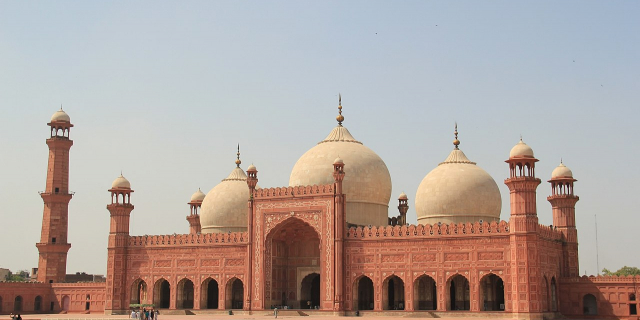

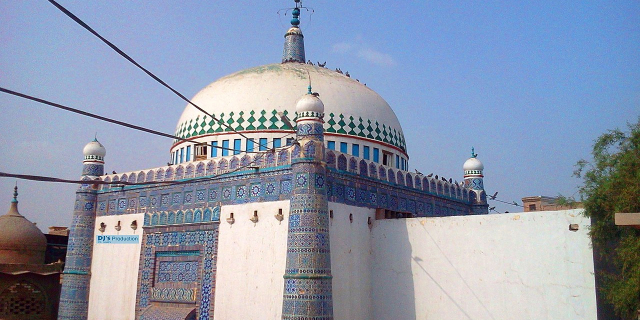

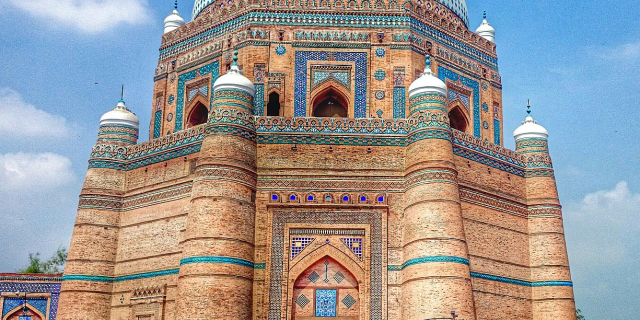


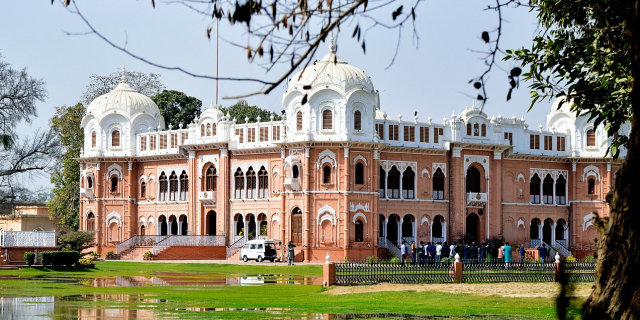

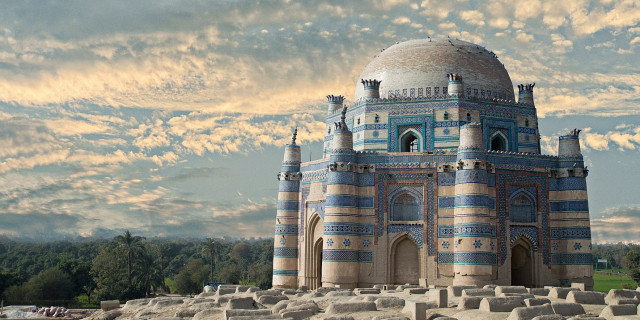
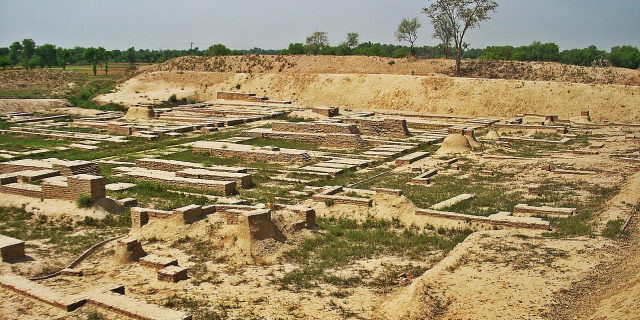


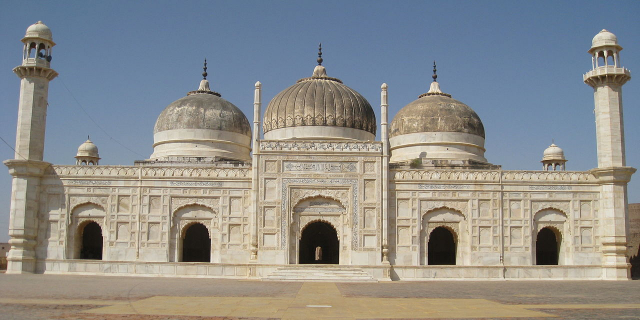
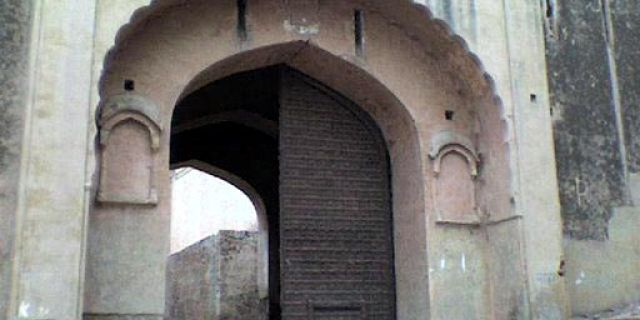



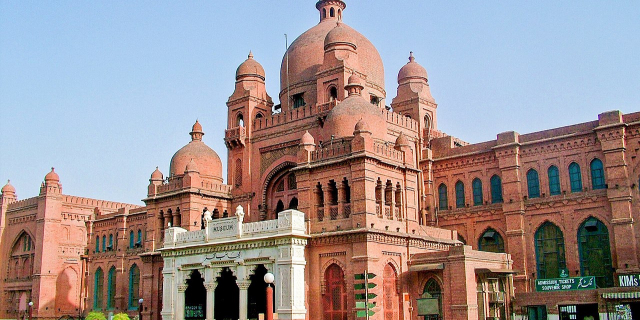


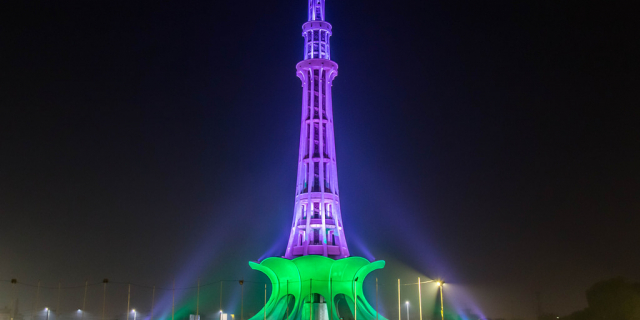
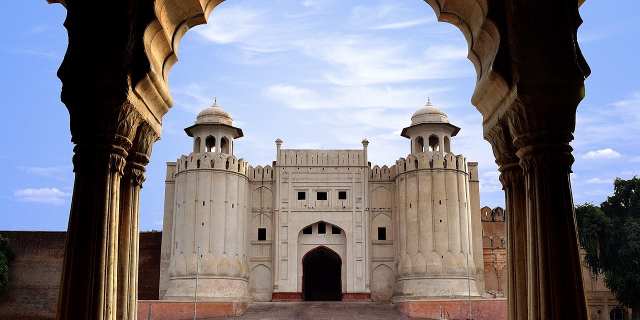
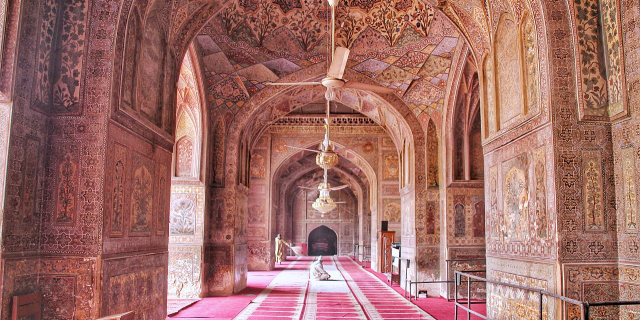
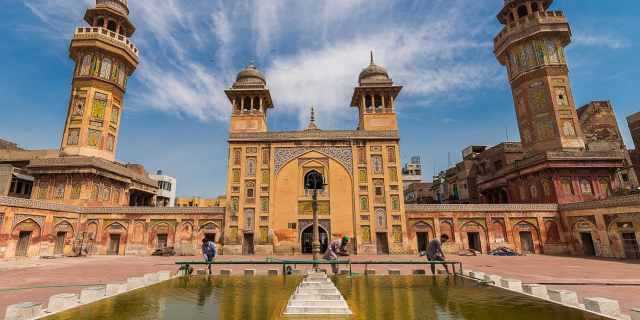


Add new comment